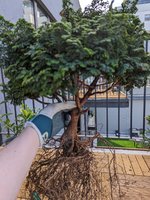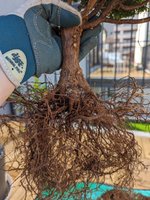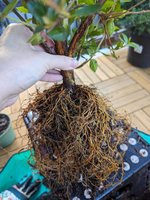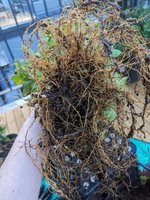I repotted this nursery cypress I bought last week which was pretty root bound so I took my time detangling every root with my trusty chopstick to clear it out. Now a week later I've got some browning of some of the foliage and wondering if I was too aggressive. Or was I just poor in my timing and should have waited to repot? Or is it just recovering?
Second set of photos is a deciduous azalea bought same day post root-clearing. Root ball was so tight virtually no water was reaching it at first. My kanuma came in today so I repotted it too, but was a bit less aggressive than with the cypress. Still wondering if it was too much and I should have sought advice on my potential cypress blunder first before jumping in. Digging out roots is just so cathartic I couldn't help myself.
Thanks for any input!
Second set of photos is a deciduous azalea bought same day post root-clearing. Root ball was so tight virtually no water was reaching it at first. My kanuma came in today so I repotted it too, but was a bit less aggressive than with the cypress. Still wondering if it was too much and I should have sought advice on my potential cypress blunder first before jumping in. Digging out roots is just so cathartic I couldn't help myself.
Thanks for any input!






